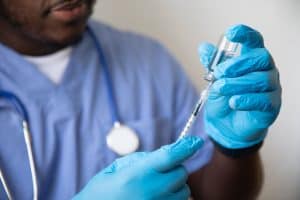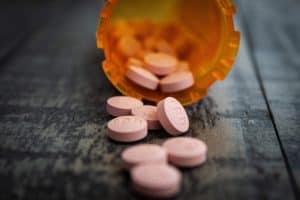GAVI vaccine group call for $7.5 billion funding
pharmafile | May 20, 2014 | News story | Medical Communications, Sales and Marketing | GAVI Alliance, Vaccine, WHO, rotavirus vaccine
The GAVI Alliance is calling on donors to back ambitious plans to immunise an additional 300 million children against potentially fatal diseases between 2016 and 2020 and save a further six million lives.
By investing together in a healthy future – an investment that would require more than $7.5 billion in total – Alliance partners can build on the success that has put developing countries on track to immunise close to half a billion additional children between 2000 and 2015, saving around six million lives.
Additional investments for the 2016-2020 period could double the total number of lives saved through GAVI-supported vaccines since 2000, the Alliance says.
The group believes an acceleration is necessary because, despite a major increase in vaccine programmes in developing countries, 1.5 million children still die each year of vaccine-preventable diseases, with one in five children worldwide not receiving a full course of the most basic vaccines.
The Alliance has set out an investment case that demonstrates how donors can support the world’s poorest countries to secure and expand their immunisation programmes, which protect children against illnesses such as pneumococcal disease and rotavirus, the leading vaccine-preventable causes of pneumonia and diarrhoea.
The group says that the economic benefits of fully funded, sustainable vaccine programmes would result in $80 to $100 billion in gains for developing countries. This will mainly be as a result of increased productivity and reductions in the cost of treating illnesses that would have been prevented through immunisation.
As GAVI-supported countries grow more prosperous, they can assume greater responsibility for their immunisation programmes. Between 2011 and 2015, countries have contributed around $470 million to these costs.
This will grow to $1.2 billion in the 2016-20 period, making developing countries one of the largest contributors to the Alliance.
By 2020, it is projected that 22 countries will have graduated and taken over full financing of their GAVI-supported vaccines, marking a new era of increased sustainability.
“We are faced with an historic opportunity to support countries to build sustainable immunisation programmes that will protect entire generations of children,” says Dagfinn Høybråten, chair of the GAVI Alliance.
“The investments we all make now can ensure the equivalent of two children every second will be reached with GAVI-supported vaccines for five years and secure the future health and economic prosperity of all our children in years to come.”
But to achieve this, the GAVI Alliance is asking donors for a large investment – specifically an additional $7.5 billion in order to support developing countries’ immunisation programmes from 2016 to 2020.
It points out that these new commitments would be added to the $2 billion already available to GAVI for the period to ensure that Alliance-supported programmes are fully funded up to 2020.
The work of GAVI
GAVI, which is backed by the Bill & Melinda Gates Foundation, the World Health Organization (WHO), the World Bank, UNICEF, donor governments and others, funds immunisation programmes for poor nations that cannot afford to buy vaccines at rich-world prices.
Through its public-private partnership model, the GAVI Alliance does not just rely on contributions from sovereign and corporate donors. Along with developing countries’ co-financing commitments, the Alliance works with vaccine manufacturers to reduce prices for GAVI-supported countries.
And it uses this private and government money to negotiate with pharma firms such as GlaxoSmithKline, Merck and Pfizer, to bring down vaccine prices for the poor.
The Alliance’s efforts have led to a 37% decrease in the cost for a GAVI-eligible country to vaccinate a child with pentavalent, pneumococcal and rotavirus vaccines since 2010. This work is set to continue with a call for vaccine manufacturers to further lower their prices for developing countries.
“The GAVI Alliance model is effective because it brings donors, vaccine manufacturers, developing countries and other partners together to immunise children,” says its chief executive Dr Seth Berkley.
“With the synergy of each partner working together we have the opportunity to change the lives of millions of children living in the most difficult circumstances.”
Ben Adams
Related Content

GSK shares new data for RSV vaccine Arexvy
GSK announced positive results from its phase 3 trial which assessed the immune response and …

GSK and Zhifei partner for shingles vaccine promotion in China
GSK has announced that it has come to an exclusive agreement with Chingqing Zhifei Biological …

WHO recommends new vaccine for prevention of malaria in children
The World Health Organization (WHO) has announced that it has recommended a new vaccine, R21/Matrix-M, …








